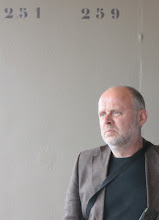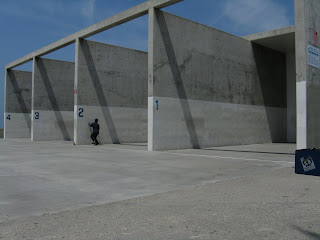1999 saw the signing of the Bologna Treaty. Ever since education in Europe has been characterized by so-called bachelor/master structure (BaMa), obtained credits are universally valid at all European institutes of education and there is an ongoing international student exchange network (ERASMUS). One could claim that education in Europe because of this structure is primarily regarded as ‘the Big Gateway’ that gives access to a society yet to come. Education, and art education, is supposed to prepare youngsters in a short time span to function in that all-encompassing organizational model which we have come to call Europe. In present-day education when the terms ‘professional’ and ‘professionalization’ come up they are very likely to refer to optimal and effective adaptation to what will be expected of young people that are part of that extensive European ideal. Students, unfortunately, are running the risk of having limited choices only and of being considered products in their own right…
What kind of Europe are we actually referring to? Is it the Europe of Brussels, Paris, Berlin, The Hague, Maastricht? In other words, does Europe boils down to the success stories of assuming cities and regions ? Do these regions benefit from the fact that people believe in the idea of Europe? Is this what city marketing is all about?
Let me get this straight: I am very interested in Europe’s development and I find it very challenging to witness the having become obsolete of the old borders and the redrawing of new borders. But this is a different Europe altogether. This is the Europe of Sarajevo, Calabria, Bari, Marseilles, Calais, Tirana, the Paris agglomeration, Potsdam, Wallonia, the Belgian mining district of the Borinage, the south-east Limburg mining district. In short, this is a Europe of slimming down, of demarcations (beyond the Schengen Treaty), new small-scale economies, ageing populations, of things intercultural, and of revaluing the notion of shrinkage. This is the Europe of transition, a no man’s land, fraying at its edges. Would you not agree that it is much more attractive and topical than the Europe of the European Union and the Monetary Fund? This call to mind images of desolate spaces in big cities where youngsters loiter and where the feeling of togetherness has engendered new codes and registers.
The ‘other Europe’ can offer substantial challenges if it is no longer seen as a problematic area. You could turn the reasoning around: what perspective of the future will come about if we see the problem areas as the new centres of European culture? However, in taking on the challenge I would plead not to turn to the so-called Creative Industry (CI), despite the fact that minister Verhagen has called into being a new fund for innovation for the creative industry, viz. the MKB+ fund (Volkskrant 19th December 2011). As far as I am concerned, it proves that the CI represents the political agenda of official Europe, of neo-liberal market-oriented thinking. An agenda that, in my view, is too one-sidedly focused on annexing problem areas and turning them into official European reserves by using the strategy of old ideas parading as new ones. Ultimately, it all comes down to the principle of gain.
Open Source Urban Campus
In 2001 the French anthropologist Clementine Deliss gave in lecture in the auditorium of the then newly constructed building of the ABKM. She congratulated the audience with the beautiful building drawn by a star architect, with the location at the heart of the economically very appealing heart of the city.
Before long, however, the lecture took a unexpected turn when Deliss posited that ABKM had better opted to take up residence in a housing estate at the outskirts of Maastricht. Deliss believed that the concept of the art academy had gone awry because art academies in the 20th century had too restrictedly trained visual artists as visual artists. In her view, the solution was to return to the classic academy model and engage in discussions about the best ways to relate to ‘the World’. Deliss was met with derision. Surely, no one in his or her right mind would claim that such a magnificent building with its outstanding facilities could not anything but beneficial for students? The very idea that the academies would benefit from returning (temporarily or partially) to the classical and basic model was considered ridiculous and delusional rather than exceptionally challenging.
Since 2001 much has happened. As a consequence of the crisis and despite all effort Europe is still a far stretch from being perfectly united. The Bologna Treaty is being scrutinized by a growing number of representatives from the world of art education. Due to the crisis the art world has focused on the issue of the identity and role of the artist, independent of political interest in the matter. In short, the theme has been the subject of many articles and the experiments in the field of innovative educational methods are numerous. One instance of an experiment is the Open Source Urban Campus (OSUC).
OSUC is not about effective adaptation but about active alienation. This implies that OSUC’s view of art education greatly values positioning next to professionalizing. The very fact of alienation necessitates a positioning. OSUC is a post-academic type of educational that ties in with the training in Fine Art that the Art Academy in Maastricht is providing. Extra muros it queries and studies new artistic practices from constantly changing perspectives. It studies how education should be organized and according to what conditions. OSUC stands for an independent model of training and education that does not start off from the prevailing reality of the Market. Martha Nussbaum’s book Not for Profit: Why Democracy Needs the Humanities (2010) unravels a beautiful argument in favour of this method of approach.
The preparations for OSUC happened in the summer of 2011 and were mainly concerned with the exploration of the content and interpretation of the concepts of ‘programme’, ‘equality’, ‘community’, ‘commitment’, ‘open source’. What does it imply to enroll in a training programme that has no established goals and didactic working methods? What does a training look like whose aim it is to deform rather than form, to expose rather than preserve. What does the notion of programme imply? What is an artistic practice? Do the visual arts contain pedagogic and educational functions? How are we to image the idea of equality between student and lecturer/mentor? What is commitment and how far can you go within a non-compulsory educational context? What is open source actually all about?
A programme is a ‘prescribed entity’ and creates expectations that in their turn instigate adapted behavior. In the case of OSUC the programme is related to proactive behavior. Equality means that everyone can assess the whole of actions and events that arise spontaneously and that everyone can have their say. Equality is only productive when there is at least some degree of interest present. A community exists when at least two parties share an interest. In that case it also means: shared autonomy. Commitment is a form of self-esteem and appreciation, something that later can be said to have been or not have been present. Is it sufficient for an artist to claim that that he is dedicated to what he is doing? Or does it take more? Open source is a broad concept of which the use and practical ethics have to be accepted by everyone.
From 5th October until 2nd November 2011, the OSUC, having 15 participants, resided on a 24/7 basis in two apartment buildings that were to be demolished in the quarter Bleijerheide in Kerkrade. The themes that OSUC has addressed are various.
ñ First of all the importance of a place of one’s own (physically and mentally) was discussed in a society that increasingly manifests itself as a no man’s land. A no man’s land becomes ‘native/familiar’ when no questions are posed about identity, when all is met with acceptation/tolerance and a feeling of interest, when a proactive attitude is adopted.
ñ Then the question was asked in what way artistic practices can contribute to the revaluation of money, for instance by creating new economies (barter trade) and giving preference to small-scale things. Gradually the artist is accepting the fact that what he does should relate to and be measured by the international artistic field. But what would happen when the production of fine art would focus on, as a small farmer would do, very specific, small-scale, local conditions?
ñ What is the importance of knowing one’s own history?
ñ What is the importance of the imagination when a situation has occurred in which there is no clear picture of the future? According to Martha Nussbaum, professor of Law and Ethics at the University of Chicago, art is part of the humanities and in that sense it plays an important role in democracy. Art is important in order to deal with the notion of durability in a meaningful way – the usefulness of a set of ideas, for example, and the durability of our surroundings.
ñ Is fine art an escape from reality or, conversely, can art provide insight into reality?
ñ How does art relate to the experience economy? Is authenticity but an illusion?
ñ What technologies can artistic practices apply without becoming dependent of them?
ñ How do artistic practices help people become critical citizens?
ñ In cities complex processes are unfolding and these processes will only increase, be they processes of growth or reduction. There is much left untouched in these processes that can be of interest for artistic practices, that can help establish new meanings and gain new insights.
Kerkrade offered a local perspective on European issues and the OSUC made clear that instances of a no man’s land are unique levers, test cases for new artistic practices, the forming of (temporary) alliances and, last but not least, innovation in education.
When taking a closer look at Europe from the perspective of OSUC and Kerkrade, education is no longer directly associated with adaptation (effective professionalization) but with active alienation (positioning). In an environment of that nature, art education does not provide ‘formation’, but rather ‘deforms’. It does not protect, but opens up to the many and various aspects of public things.
OSUC does not train young people to become visual artists in the confines of the art world, but makes them into critical citizens that produce art, but also relate to the world through their art.
This type of Europe offers unique opportunities to establish new art practices that produce things that no longer tie in with the old principle of haves vs. have-nots, but adhere to the new principle of aware vs. unaware and that show the importance of generating critical, independent views.
This is what Europe and the Euro is badly in need of.
Erik J de Jong
january 2012
this article was published in The Eutropolitan, a journal for the non-existing city of Eutropolis
































